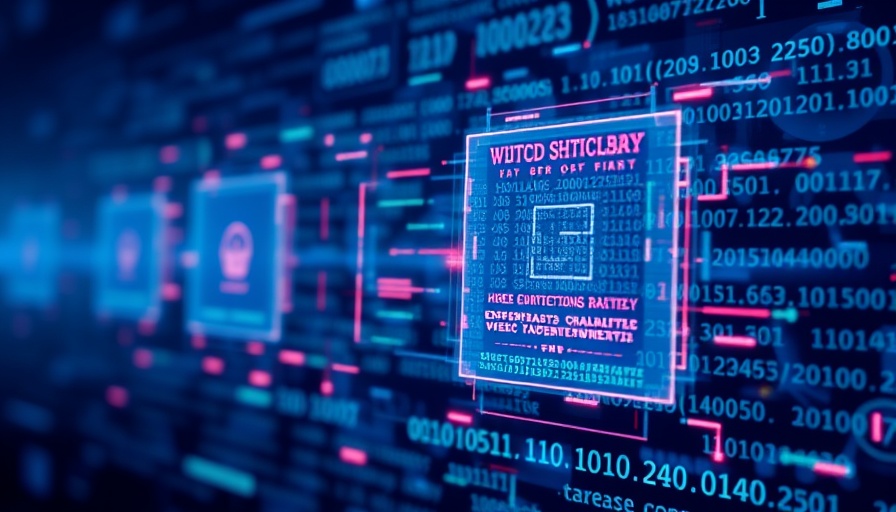
Understanding Cybersecurity: A Language of Its Own
The field of cybersecurity is riddled with complex jargon that can alienate or confuse both newcomers and seasoned professionals. With ongoing developments in technology and constant threats like hacking attempts and data breaches, it's crucial to become fluent in the terminology that defines this dynamic landscape.
What Is an Advanced Persistent Threat (APT)?
One of the most important terms in cybersecurity is the Advanced Persistent Threat (APT). Often referred to as a well-funded group of hackers, APTs can infiltrate systems for extended periods, primarily to conduct espionage or sabotage. Historically, many APT groups have been linked to nation-states, such as China and Russia, but the line has blurred recently with non-state actors engaging in similar tactics. This evolution calls for a deeper understanding of not just what APTs are, but also their motives and capabilities.
Understanding Adversary-in-the-Middle Attacks
An adversary-in-the-middle (AitM) attack exemplifies the dangers of unsecured network traffic. By intercepting data as it travels over the internet, malicious actors can eavesdrop on sensitive communications, endangering personal information like passwords. Interestingly, this type of attack isn't solely the realm of malicious actors; legitimate security researchers utilize similar methods to identify vulnerabilities in applications and services.
The Role of Attribution in Cyber Defense
Attribution is a challenging yet crucial aspect of cybersecurity, as it involves identifying the source behind cyberattacks. The mantra that “attribution is hard” underscores the complexities involved in making definitive claims about who is responsible for a breach. Organizations like CrowdStrike and Mandiant have developed their own methodologies for conducting attribution, striving to provide clarity in a field that often lacks transparent data.
Learning the Basics: Key Terminology You Should Know
To navigate the cybersecurity landscape effectively, familiarizing yourself with key terminology is essential. Terms like ‘arbitrary code execution’ shed light on vulnerabilities that can be exploited to gain unauthorized access to systems. Understanding such concepts is not just for IT professionals; the increasingly pervasive nature of technology means that knowledge of these terms is beneficial for everyone.
Embracing a Culture of Continuous Learning
As technology evolves, so do the tactics of cybercriminals. For this reason, it’s imperative to stay updated with the latest trends, insights, and terminology in the cybersecurity space. Engaging with trusted tech news platforms can provide valuable information that empowers individuals and organizations to safeguard against potential threats. Learning about cybersecurity can also augment your understanding of broader technological advancements and emerging trends.
Practical Tips for Staying Informed
- Subscribe to reputable tech news sites to receive timely updates on emerging threats and innovations.
- Consider participating in webinars or courses that cover cybersecurity fundamentals.
- Follow industry leaders and organizations on social media to gain insights into best practices.
Conclusion: The Path Forward in Cybersecurity Knowledge
In an era where technology is deeply intertwined with our daily lives, understanding cybersecurity terminology is a critical step towards protecting yourself and your organization. By becoming familiar with the language of cybersecurity, you can navigate potential threats more effectively. Stay informed, stay curious, and remember that knowledge is your first line of defense in the digital world. For more insights and updates on cybersecurity and technology, explore our daily tech news platforms.
 Add Row
Add Row  Add
Add 



Write A Comment